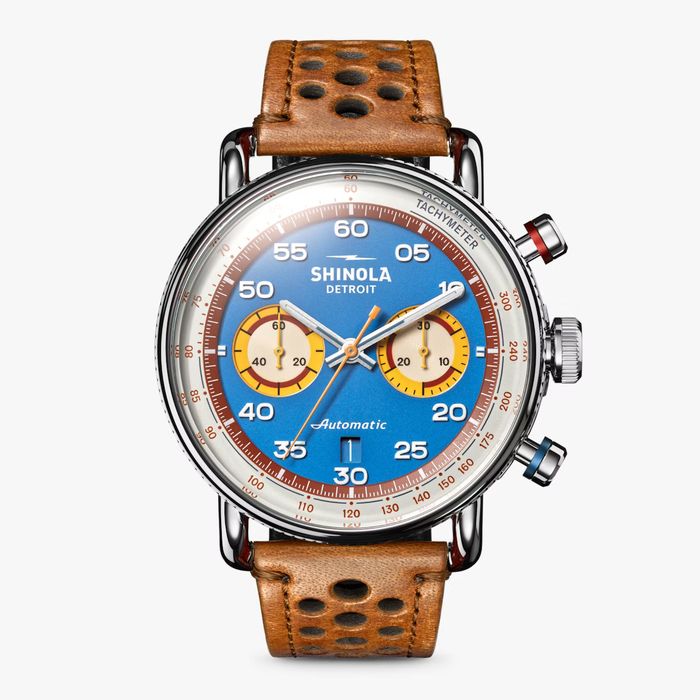
From Tiffany to Shinola, U.S. luxury manufacturers are leveraging 3D printing to redefine craftsmanship, boost production efficiency, and compete globally.
The incoming President has emphasized potential overall increases in import tariffs and specific tariff increases on European companies if Europe doesn’t increase LNG imports. Europe is the provider of most high-end luxury goods imported into the U.S. We have previously written Fabbaloo articles on leading French luxury goods manufacturers, including LVMH and Cartier. Thirty-eight out of forty of France’s largest companies already manufacture in Mexico, so there may be an opportunity to manage some risk with Mexican supply chain planning, depending on how the U.S.-Mexican tariff discussions conclude.
U.S. Jewelry Production
LVMH now owns Tiffany, which has large jewelry manufacturing facilities in New Jersey. We recently authored a Fabbaloo article on Stuller Inc., a Louisiana-based innovative manufacturer that is leading the way in U.S. jewelry onshoring and advanced 3D printing technology. Stuller has demonstrated the ability to design and manufacture high-end bespoke jewelry pieces. Interestingly, Stuller already supplies all the leading global jewelry brands.
Stuller’s Integration of 3D Printing in Jewelry Manufacturing
Stuller Inc., headquartered in Lafayette, Louisiana, has been at the forefront of integrating 3D printing technology into jewelry manufacturing, enhancing both design flexibility and production efficiency.
One notable example is their collaboration with B9Creations™ 3D printers. This partnership allows Stuller to produce high-resolution resin models rapidly, enabling customers to visualize and try on their unique designs within 30 minutes. This swift turnaround not only enhances customer experience but also streamlines the customization process.
Additionally, Stuller’s Model Department utilizes powerful 3D printers to create direct cast resins from CAD images. These resins serve as prototypes for approval and subsequent production, ensuring precision and reducing lead times.
Furthermore, Stuller’s integration of CounterSketch® software with B9 3D printing bridges the gap between virtual designs and physical models. This seamless transition from digital renderings to tangible prototypes facilitates efficient customization and accelerates the production process.
U.S. Luxury Watch Production
Although most people think of Switzerland when they think of luxury watches, Shinola of Detroit is a very popular brand. The Shinola Canfield collection includes watches and headphones.
Canfield Watches and 3D Printing
Shinola, based in Detroit, has effectively incorporated 3D printing into the design and development of its Canfield watch series.
The design process begins with initial concept sketches, which are then transformed into 3D models using digital modeling and rendering tools. 3D printing is employed to create prototypes, allowing designers to evaluate and refine the physical form of the watches before mass production.
This approach enables Shinola to achieve a more open, modern look in their timepieces, particularly through the top-loaded case construction featured in the Canfield collection. The utilization of 3D printing in prototyping ensures precision and allows for collaborative input from various specialists, enhancing the overall design quality.

A.L.B Watches is a French luxury watch brand known for integrating 3D printed dials into their timepieces, exemplifying a fusion of traditional watchmaking with modern manufacturing techniques. A.L.B became known for its work in the field of 3D printing because two of its models, A.L.B 000 and A.L.B 100, are among the first to integrate 3D printed dials.
The State of U.S. Jewelry Production
The U.S. jewelry manufacturing industry has been experiencing a resurgence, driven by technological advancements and a shift towards domestic production. Companies like Stuller Inc. exemplify this trend by leveraging 3D printing to enhance design capabilities and production efficiency.
The integration of 3D printing allows for rapid prototyping, customization, and the creation of complex designs that were previously challenging to produce. This technological adoption not only reduces production times but also lowers costs, making U.S. manufacturers more competitive in the global market.
Integrating 3D Printing into Jewelry Manufacturing
The incorporation of 3D printing into jewelry manufacturing offers several advantages:
- Rapid Prototyping: Designers can quickly produce prototypes to assess aesthetics and functionality, facilitating faster design iterations.
- Customization: 3D printing enables the creation of bespoke pieces tailored to individual customer preferences, enhancing customer satisfaction.
- Complex Geometries: Designs with intricate details and complex structures can be realized with ease, expanding creative possibilities.
- Cost Efficiency: By reducing material waste and labor costs, 3D printing offers a cost-effective solution for both small-scale and mass production.
- Supply Chain Optimization: On-demand production reduces the need for large inventories, streamlining the supply chain and reducing storage costs.

Imported Luxury Eyewear
Many luxury eyewear brands are imported from Europe. We have previously covered how the luxury eyewear industry has been utilizing 3D printing techniques to create unique and customized pieces with pleasing aesthetics and unique functionalities (including eyewear that integrates AI and hearing aids). The eyewear industry is “eyeing” 3D printing and making extraordinary advances as a result.
The Research & Development Tax Credit
The now permanent Research and Development (R&D) Tax Credit is available for companies developing new or improved products, processes and/or software.
3D printing can help boost a company’s R&D Tax Credits. Wages for technical employees creating, testing and revising 3D printed prototypes are typically eligible expenses toward the R&D Tax Credit. Similarly, when used as a method of improving a process, time spent integrating 3D printing hardware and software can also be an eligible R&D expense. Lastly, when used for modeling and preproduction, the costs of filaments consumed during the development process may also be recovered.
Whether it is used for creating and testing prototypes or for final production, 3D printing is a great indicator that R&D Credit-eligible activities are taking place. Companies implementing this technology at any point should consider taking advantage of R&D Tax Credits.
Conclusion
Luxury goods are typically high-priced items, so import tariffs will impact purchase decisions. The U.S. has some leading luxury product brands that utilize 3D printing technology and provide alternatives worthy of consideration. The integration of 3D printing in jewelry and watch manufacturing not only enhances design and production capabilities but also positions U.S. manufacturers to better compete in the evolving global market.
